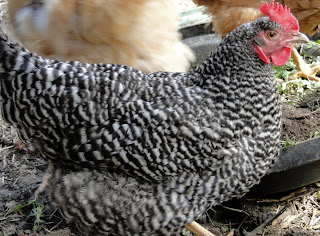At the end of August, I pulled all my cucumber vines out of the garden, cleared the spot. The beans and corns are still going strong, weather was still decent. Staring at the bare spot, I thought to myself: if I leave it like it is, weeds are going to take over. I still have some Sweetbell Turnip left from the spring, what could I loose? I scattered the seeds in the newly cleared spot, without adding any fertilizers to the soil. Since I have never done this before, I sowed the turnips densely, thinking, the weather here in the Pacific Northwest could turn any time, the extra seeds would give me some wiggle room in case not all of them will make it. One week later, I spotted densely packed turnip seedlings everywhere. The turnips were not big enough to eat, and they grew way too close together. So I started thinning by eating the "micro greens" (they were delicious in salads). By October, I got golf ball sized turnips, I pickled, made roasted turnips, turnip au gratin, gave them away, looked for all sorts of ways to dispose of them.... This continued until Thanksgiving. After Thanksgiving, the weather was getting cooled and cooler. The night time temperature was going toward freezing.
 I picked as big of a batch of turnips as I could. Washed and removed the greens, bagged the turnips. I was ready to give up the rest of it. December rolled along, we had several days with night time temperature down to the 20th. I did not go check the turnips for several days, I was certain they were goners. Well, well, well, what do I know?! I went to check my turnip patch today, they are still going strong!!!! Looks like the outer leaves may have been frozen and thawed, but the turnips were as sweet as ever! I am now convinced there must be anti-freeze in the turnips! That may well be the case, the starch in the turnips could be keeping them from freezing. Whatever the case, I am going to have to do this every year. The lesson is: Plant Silverbell Sweet Turnip in the fall, you will be richly rewarded!
I picked as big of a batch of turnips as I could. Washed and removed the greens, bagged the turnips. I was ready to give up the rest of it. December rolled along, we had several days with night time temperature down to the 20th. I did not go check the turnips for several days, I was certain they were goners. Well, well, well, what do I know?! I went to check my turnip patch today, they are still going strong!!!! Looks like the outer leaves may have been frozen and thawed, but the turnips were as sweet as ever! I am now convinced there must be anti-freeze in the turnips! That may well be the case, the starch in the turnips could be keeping them from freezing. Whatever the case, I am going to have to do this every year. The lesson is: Plant Silverbell Sweet Turnip in the fall, you will be richly rewarded!














































